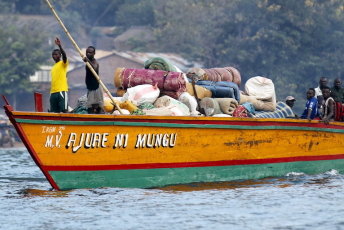Acting on a tip-off, a South African Police Service (SAPS) team arrived at an unoccupied mine on the outskirts of Johannesburg. It was a warm day and everything appeared calm above ground on the mine. Yet this routine inspection turned violent underground as battles erupted between the police and a group of illegal miners.
Deep inside the mine, with the temperature reaching over 40°C, the police faced off against an armed group of miners who would rather die than be caught. To protect themselves, the miners placed explosives at strategic spots in the mine’s tunnels with the intention of perpetrating maximum damage to whoever dared apprehend them.
Two hours later, and running out of ammunition, the miners surrendered. The battle wasn’t without casualties – four illegal miners had been shot dead and two police officers were seriously injured. The remaining miners were arrested and charged with trespassing and violations under the South African Explosives Act, Act 26 of 1956.
These miners above were part of organised criminal syndicates, and are often referred to as criminal miners within mining and law enforcement circles. This distinguishes them from artisanal small-scale miners who operate without licenses. The criminal miners run extremely efficient operations where the risks are worth the profits they make. This is also a crime that stays hidden and is seldom reported on in the general media.
In 2018 officials in Johannesburg were alerted by two of South Africa’s largest enterprises, Transnet and Sasol that illegal miners were blasting within metres of gas and fuel lines under the city. The area above these miners housed a major sports stadium, highways, and residences. Had the fuel pipes been damaged, the scale of the damage would have been catastrophic.
City officials managed to convince the miners to withdraw and cease their operations in that area. However, there was nothing to stop them from moving to another area, potentially putting infrastructure above their new operation site in danger. In curbing illegal explosives, such harms can be prevented.
Getting hold of explosives for use in their mining operations is essential and it is also extremely dangerous. Criminal syndicates controlling illegal mining operations obtain explosives from two sources. The first is the black market, whereby explosives are smuggled from neighbouring countries, many of which also have outdated regulatory standards.
The second is source is from legal mines and blasting operations. According to a mine manager with extensive experience in South Africa and Zimbabwe, illegal miners access explosives from mine personnel operating in mines. These mine personnel includes legal blasters and their assistants who steal explosive cartridges with every blast and sell these to the illegal miners. ‘Due to regulations and measures put in place, it is fairly difficult to obtain explosives by other means,’ he says.
Law enforcement needs to have information to determine from which source the illegal explosives originate – black market or theft from legal mines – for their investigations to be more targeted and therefore effective.
According to a senior law enforcement officer, South Africa consumes around 300 million tons of explosives annually in legal mining operations, road building, and construction. As a controlled substance, the possession and use of explosives falls under the 1956 Explosives Act and related regulations, the latter being last updated in 1972.
Under the existing explosives legislation, South Africa has several control regulators tasked with keeping the country safe from illegal explosives. The SAPS, together with the labour and mineral resources departments are the primary regulators, and then the trade and industry, transport, and defence departments are designated secondary regulators.
Explosives are considered illegal when the custodian is not in possession of the legal permits to store, transport or use them. This applies to commercially, authorised manufactured explosives.
Illegal explosives play a critical role in illegal mining operations and are an important tool for criminal syndicates controlling such operations. They also cost the South African economy over R7 billion annually and present potential harm to the public.
Enforcing laws around the use and control of explosives in South Africa is a complex matter. Firstly, illegal mining operations are controlled by criminal syndicates. Secondly, the supply chain of commercial explosives is weak and open to exploitation.
Poor controls and tracking of the supply chain of commercial explosives presents a significant challenge to law enforcement. For instance explosives cartridges and detonators aren’t individually marked, making it easier to conceal in the supply chain before reaching the end-user.
This challenge is further compounded by the fact that law enforcement officers have to comply with outdated explosives regulations. The most ‘recent’ regulations for the dormant 2003 Explosives Act require that every explosives cartridge and detonator assembly be individually marked in order to be tracked and traced by a computerised system.
To this end, Colonel Jurie van Staden, commander of the SAPS’s Explosives Control Section, emphasises the need to implement track and trace technology in the supply chain of commercial explosives. This will both strengthen the control of explosives and curb the trafficking of illegal explosives.
If, for example, the illegal explosives used in a crime or illegal mining operations may be traced back to a legal mine, the investigation would be in a position to determine how these were removed from the mine and those responsible could be held accountable.
Similarly, if the illegal explosives are traced to the black market, the manufacturer of these explosives could be identified and law enforcement would be able to verify at which point along the supply chain the explosives were diverted.
The difficulty in implementing a track and trace system is its cost, and who covers this. While the cost of the system will be carried by the manufacturers and importers, eventually the cost will be channeled to the end-user. In other words, the cost of procuring explosives will increase for the user. However, it can be considered a small price to pay to ensure better end more effective control of the explosives.
It is important to note that the 2003 Act has been approved by the President. However, until the 2019 draft Explosives regulations are approved by the Minister after publication in the Government Gazette for final public comment, there exists little scope to enforce such an initiative.
To this end, the 1972 regulations which are being used to implement the 1956 Act need to be updated in order to bring it up to speed with recent developments. It is important to note that the track and trace provisions are only incorporated into the 2019 draft regulations (which are meant to support the 2003 Act) and not previous regulations.
As such, it is only when the 2003 Act and the 2019 regulations are approved can the track and trace system be implemented. Until such time that this happens, law enforcement officers will continue to face difficulties in curbing the threat of illegal explosives and the various networks capitalising on this loophole.
Illegal explosives are an important tool in the arsenal of illegal miners, and curbing access to them would deal a blow to these syndicates. The track and trace system provides a start to achieve this. It will however require the will to make it happen.
Richard Chelin, Senior Researcher and Willem Els, Senior Training Coordinator, ENACT







